

17. Syntheses and uses of isotopically labelled compounds |
969 |
10. New synthesis of [ 11C]propyl ketene (201) and its reactivity with alcohols
The total yield of 201 was increased and the synthesis time reduced by extracting [11C]butyric acid from its lithium salt by dry 0.1% HCl/He gas mixture and carrying out its pyrolysis at 530 °C over glass beads (equation 104). The relative reactivity of 201 to primary, secondary and tertiary alcohols (equation 105a, b, c) has been found to be as 1:0.4:0.1, respectively. Several bioactive compounds have been labelled with
[11C]propyl ketene, such as carbohydrate compounds193 and N-butyl compounds, for instance N-[11C]butyryl THPO, 202, and some phorbol esters192, 203, 204 and 205.
11CO2 |
|
|
P rLi |
|
|
Pr11COOLi |
|
HCl / He |
Pr11COOH |
|||||||||
|
|
|
|
|
|
|
||||||||||||
PhCH2 CH2 OH |
201 |
|
|
|
PhCH2 CH2 O11 |
CPr |
|
|
|
|||||||||
|
|
|
|
|
|
|
|
|
|
|||||||||
|
|
|
|
|
|
|
|
|
|
|
|
|
|
|
|
|
|
|
|
|
|
|
|
|
|
|
|
|
|
|
|
O |
|
|
|
||
PhCH2 CHCH3 |
201 |
|
|
|
|
PhCH2 CHCH3 |
|
|
|
|||||||||
|
|
|
|
|
|
|
|
|
|
O |
|
|
|
|||||
|
|
|
|
|
|
|
|
|
|
|
|
|
|
|
||||
|
OH |
|
|
|
|
|
|
|
|
|
|
|
|
|||||
|
|
|
|
|
|
|
|
|
|
|
11C |
|
|
|
||||
|
|
|
|
|
|
|
|
|
|
O |
|
Pr |
|
|
|
|||
PhCH2 C(Me2 )OH |
|
201 |
|
PhCH2 C(Me2 )O11 |
CPr |
|||||||||||||
|
|
|
|
|
||||||||||||||
|
|
|
|
|
||||||||||||||
|
|
|
|
|
|
|
|
|
|
|
|
|
|
|
|
|
|
|
|
|
|
|
|
|
|
|
|
|
|
|
|
|
|
|
O |
||
HO |
|
N |
|
|
|
|
|
|
|
|
|
OH |
|
|
|
|||
|
|
|
|
|
|
|
|
|
|
|
|
|
|
|
|
|||
|
|
|
O |
|
|
|
|
|
|
|
|
|
|
|
|
O11COPr |
||
|
|
|
|
|
|
|
|
|
|
|
|
|
|
|
|
|||
|
|
|
|
|
|
|
|
|
|
|
HO |
|
|
|
||||
Pr11C |
N |
|
|
|
|
|
|
|
|
|
|
|
|
|
|
|
||
|
|
|
|
|
O |
|
|
|
|
|
|
|
|
|
|
O |
||
|
|
|
|
|
|
|
HO |
|
|
|
|
|
|
|||||
O |
|
|
|
|
|
|
|
|
|
|
OH |
|
|
|
||||
|
|
|
|
|
|
|
|
|
|
|
|
|
|
|
|
|||
(202) |
|
|
|
|
|
|
|
|
|
(203) |
|
|
|
|
|
|||
|
|
|
|
|
|
|
|
|
|
|
|
|
|
|
|
|
|
O |
O
HO
HO
O 11CPr
O
(205)
Pyrolysis |
EtCH |
11C O |
|
530 °C
(201) (104)
(105a)
(105b)
(105c)
OCOPr
O11COPr
HO
HO
OH
(204)
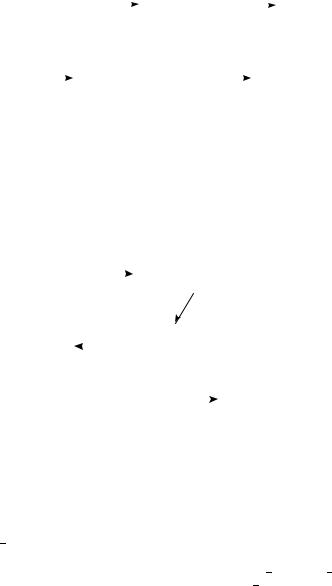
970 Mieczysław Ziełinski´ and Marianna Kanska´
11. Synthesis of [˛-11C]amphetamine, 206, and [˛-11C]phenethylamine, 207
206 and 207, increasing the synaptic levels of major neurotransmitters in the mammalians brain, noradrenaline or dopamine via stimulation of their release, have been synthesized194 (equations 106 and 107).
11 |
|
+ PhCHO |
|
A c OH, A c ONH4 |
|
PhCH |
|
11CNO2 |
LiA lH4 |
|
PhCH2 11CHNH2 |
|||||||
|
|
|
|
|
|
|
|
|
|
|||||||||
|
|
|
|
|
|
|
|
|
|
|||||||||
CH3 |
CH2 NO2 |
|
104 °C, 10 min, separations |
|
|
|
|
|
|
|
|
|
|
|
|
|||
|
|
|
|
|
|
|
|
|
|
Me |
|
|
|
Me |
||||
|
|
|
|
|
|
|
|
|
|
|
|
|
|
(206) |
(106) |
|||
|
|
|
|
|
|
|
|
|
|
|
|
|
|
|
|
|
||
11CH NO + PhCHO |
1. NaOH |
11 |
|
|
|
LiA I H4 |
11 |
|
|
|
||||||||
|
|
|
|
|
|
|
|
|
|
|
|
|
||||||
|
|
PhCH |
|
CHNO2 |
|
|
|
|
PhCH2 |
CH2 NH2 |
||||||||
3 2 |
|
|
|
|
|
|
|
|
||||||||||
|
|
|
2. HCl |
|
|
|
|
|
|
|
|
|
|
|
|
|||
|
|
|
|
|
|
|
|
|
|
|
|
|
|
(207) |
(107) |
|||
12. Synthesis of [11C]methylenetriphenylphosphorane and [ˇ-11C]styrene (208)
The original Wittig synthesis195,196 of 208, shown in equation 108 involving synthesis of [11C]methyltriphenylphosphonium iodide, [11C]methylenetriphenylphosphorane and the 11C-Wittig type reaction used for preparation of the 11C-labelled methylene group, has been largely improved196 [11C]methyl iodide and benzaldehyde have been easily converted in high yield to 208 as shown in equation 109.
|
|
|
|
|
THF |
|
|
− |
+ |
|
|
|
11CH3 I + Ph3 P |
|
|
|
|
I + Ph3 P11CH3 |
|||||||
|
|
°C, 6 min |
|
|
||||||||
|
90 |
|
|
|
|
|
|
|||||
|
|
|
|
|
|
|
|
|
THF |
|
|
|
|
|
|
|
|
|
|
|
|
|
BuLi |
(108) |
|
PhCH |
|
11CH |
|
P hCH |
|
O |
Ph3 P |
|
11 |
CH2 |
||
|
|
|
|
|||||||||
|
|
|
|
|||||||||
|
|
|
|
|
|
|
||||||
|
2 |
|
|
|
|
|
|
|
|
|||
(208)
+
Ph3 P11CH3 + PhCH O
O
epichlorhydrin |
|
11CH2 |
|
|
|
PhCH |
|
(109) |
|
|
|
|||
1, 2-dibromobenzene |
|
|
||
80 − 90% r. yield
13. Synthesis of [11C]cyanoalkyltriphenylphosphoranes
The 11C-labelled bifunctional precursors 3-[11C]cyanoethyltriphenylphosphonium bromide, 209, 4-[11C]cyanopropyltriphenylphosphonium bromide, 210, 5-[11C]cyanobu- tyltriphenylphosphonium bromide, 211, 4-[11C]cyanopropyltriphenylphosphonium iodide, 212 and 5-[11C]cyanobutyltriphenylphosphonium iodide, 213 have been obtained197. The intermediates 209 213 were treated in one-pot reactions with epichlorhydrin (generating the base in situ196,198) and aldehyde (Wittig reaction) providing the 11C-labelled olefins (equation 110). The aromatic olefins have been obtained from 209 213 in 85 96% radiochemical yield; the aliphatic olefins have been obtained in 60 78% radiochemical yield from 212 and 213. No change in the stereochemical outcome (Z/E ratios) was

17. Syntheses and uses of isotopically labelled compounds |
971 |
observed when using the bromide or iodide salt.
|
+ |
|
XX− |
+ 11CN− |
|
K − 2.2.2 / K |
+ |
|
+ |
|
− |
− |
|
|
|||||
Ph P(CH ) |
|
|
|
|
11 |
|
|
||||||||||||
3 |
2 |
n |
|
|
|
|
1, 2-C6 H4 Cl2 |
Ph3 P(CH2 )n |
CNX |
+ X |
|
|
|||||||
|
|
|
|
|
|
|
|
|
|
|
|
|
|
||||||
n = 2, 3 and 4 |
|
|
|
90 °C, 5 − 10 min |
|
(209) n = 2, X = Br |
|
|
|||||||||||
|
|
|
|
|
|
|
|
|
|
|
|
||||||||
|
|
|
|
|
|
|
|
|
|
(210) n = 3, X = Br, |
|
|
|||||||
X = Br, I |
|
|
|
|
|
|
|
|
|
|
|
|
|
||||||
|
|
|
|
|
|
|
|
|
|
|
(211) n = 4, X = Br |
|
|
||||||
|
|
|
|
|
|
|
|
|
|
|
|
|
|
(110) |
|||||
|
|
|
|
|
|
|
|
|
|
|
|
|
|
(212) n = 3, X = I |
|||||
|
|
|
|
|
|
|
|
|
|
|
|
|
|
(213) n = 4, X = I |
|
|
|||
|
|
|
|
1-chloro -2,3 -epoxypropane |
|
|
|
|
|
|
|
||||||||
|
|
|
|
|
|
|
|
|
|
|
R1CHO, 140−150 °C, 10 min |
|
|
|
|
||||
+ − |
|
|
11 |
|
R1CHO |
|
|
|
|
|
1 |
|
|
|
11 |
|
+ Ph3 P |
|
|
|
|
|
|
|
|
|
|
|
|
|
|
|
|
||||||
|
|
|
|
|
|
|
|
|
|
|
|
|
|
||||||
Ph3 PCH(CH2 )n-1 CN |
|
|
|
|
|
|
R CH |
|
CH(CH2 )n-1 |
CN |
|
O |
|||||||
|
|
|
|
|
|
|
|
||||||||||||
14. Synthesis of 11C-labelled 5-hydroxytryptamine, [ 11C]5-HT (214)
[11C]serotonin (214) has been sythesized199 as outlined in equation 111 and was ready for injection to study the transport of [11C]5-HT across the pulmonary endothelial cell membrane and to make external non-invasive measurements of uptake of amines by the lung with standard nuclear medicine imaging equipment199. [14C]5-HT has been used before as a marker of lung damage200.
MeO |
N |
|
|
+ |
|
|
Me2 SO4 |
N |
|||
|
|
|
|
||
|
|
|
THF, glacial A c OH, < 10 °C |
−OSO3 Me |
|
NH |
|
|
|
|
|
|
|
K222 / MeCN, 110 ° C, 5 min |
|||
|
|
|
|||
HO |
11CN |
|
|
K11CN |
|
|
BBr3 |
|
|
||
|
|
|
11CN |
||
|
|
|
CH2 Cl2 , 110 °C, 5 min |
||
NH |
|
|
separation |
(111) |
|
|
LiA lH4 , A I Cl3 , Et2 O |
|
|||
RT, 5 min, HPLC separations |
|
|
|
|
|
|
HO |
|
|
NH2 |
|
|
|
|
11CH2 |
||
|
|
|
|
|
|
NH
(214)
15. Synthesis of [ 11C]melatonin (215)
This hormone of the pineal gland, 215, has been labelled201 with carbon-11 to study its role in health, depressive illness and internal clock disorders (cyclic events of life in mammals). The new labelling reagent [11C]acetyl chloride has been used as shown
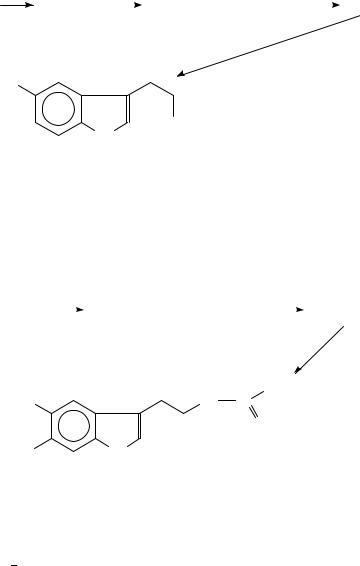
972 |
Mieczysław Ziełinski´ and Marianna Kanska´ |
in equation 112. Using 13C-enriched CO2, 13C-melatonin has been synthesized also and examined by 13C-NMR spectroscopy and mass spectrometry. The melatonin had 13C- enriched carboxamido carbon202.
MeBr Mg
MeMgBr |
11CO |
|
[ Me11COOMgBr ] |
C H (COCI) -o |
|
Me11COCl |
|||
|
2 |
6 |
4 |
2 |
|
|
|||
|
|
|
|
|
|
||||
|
|
|
p-MeOC6 H4 NHCH |
|
CH(CH2 )2 NH2 |
||||
|
|
|
|
||||||
|
|
|
|
||||||
MeO |
(112) |
NH11COMe
NH
(215)13% r. yield
16.Synthesis of [carbonyl-11C]6-fluoromelatonin (216)
This indoleamine-type neurohormone201, 216 secreted by the pineal gland203, has been prepared204 as shown in equation 113 with a 200-fold greater specific activity than the 6- [18F]fluoromelatonin synthesized by Chirakal and coworkers205. 216 permits one to study low populations of high-affinity binding sites or receptors of melatonine with PET206,207.
|
|
|
Phthaloyl dichloride |
||
11CO2 |
MeMgBr / Et2 O |
|
2,6-di-t-butylpyridine |
||
|
[Me11COOMgBr] |
|
|
Me11COCl |
|
|
|
|
|||
|
under N2 , 2 min |
|
|
8 min |
|
|
|
|
|
CH2 Cl2 , 0 °C |
|
|
|
|
|
|
6 -fluoro - |
|
|
|
|
|
5 -methoxytryptamine |
|
|
|
|
(113) |
|
|
|
|
|
CH3 |
|
|
MeO |
NH |
11C |
||
O
FNH
(216)35% r. yield from cyclotron produced [11C]CO2
17.Synthesis of 11C-labelled citalopram (217)
This prototype drug208, 217, has been 11C-labelled209 for assessment of serotonin uptake sites in depressed patients by reaction of [11C]iodomethane with desmethylcitalopram, 218, in 18 66% radiochemical yield (equation 114). 217 has been obtained also by Dannals and coworkers210 by reacting freshly prepared desmethylcitalopram dissolved in DMF with [11C]methyl iodide. The radiochemical yield based on [11C]CH3I was about 20%; the overall radiochemical yield was about 9% based on the initial activity of [11C]CO2 produced by 16 MeV proton irradiation of nitrogen gas in biomedical cyclotron.
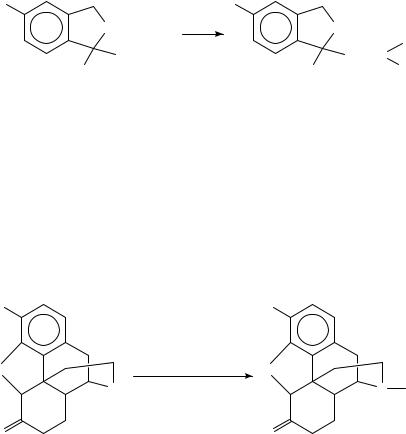
17. Syntheses and uses of isotopically labelled compounds |
973 |
||
NC |
|
NC |
|
O |
11CH3 I |
O |
|
|
|
|
11CH3 |
(CH2 )3 NHCH3 C6 H4 F-p
(218)
(CH2 )3 N
C6 H4 F-p CH3
(217) r. purity > 95%,
sp. act. (2.52 − 16.06).103 GBq / mmol
(68 − 434) Ci / mmol at the end of synthesis
(114)
18. Synthesis of N-[methyl-11C]hydromorphone (219)
219 has been obtained211 in the direct alkylation of desmethyl hydromorphone, 220, with 11CH3I using a remote-controlled synthetic system212 (equation 115). Compound 219, an opiate receptor ligand, has been used211 to study the distribution and kinetics in brain of macaque monkeys213 by PET. The 11C-labelled alkaloids such as morphine, heroin, codeine, nicotine and bromocryptine have also been prepared by N-alkylation of the corresponding desmethyl compounds with 11CH3I in DMF or in acetonitrile214.
HO |
HO |
O |
11CH3 I, DMSO / DMF (1 : 1) O |
|
NH |
107 °C, 5 min |
|
O |
O |
|
(220) |
(219) r. purity > 99.5% |
|
after semipreparative HPLC |
||
|
19. Synthesis of (N-[ 11C]methyl)doxepin (221)
N 11CH3
(115)
Doxepin, 221, a tricyclic antidepressant, one of the most potent histamine H1 antagonists215, has been labelled216 with carbon-11 by N-alkylation of normethyldoxepin (equation 116).
20. Synthesis of (N-[ 11C]methyl)Y-29794 (222)
The title compound, 2-(8-dimethylaminooctylthio)-6-isopropyl-3-pirydyl-2-thienyl ketone (222), a potent competitive reversible inhibitor of the enzyme PEP (prolyl endopeptidase which cleaves a variety of oligopeptides in brain and peripheral tissues217), has been synthesized218 by [11C]alkylation of the N-desmethyl precursor 223 (equation 117). 222 crosses the BBB and inhibits brain PEP in rodents219. It is used in the study of biodistribution and activity of brain proteases by PET to evaluate the roles
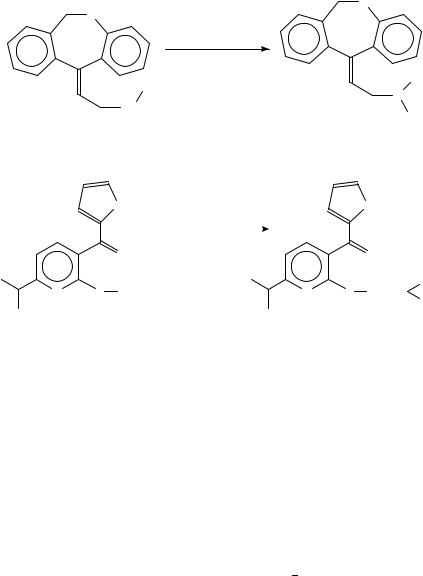
974 |
Mieczysław Ziełinski´ and Marianna Kanska´ |
of peptides and protein degradative processes in normal and diseased human brain218.
O
O
1.11CH3 I / DMF, −78 °C
2.80 °C, 3 min
3.Work-up, HP LC
CH3
NH
S
|
NCA 11CH3 I , Et3 N |
|
1. DMF, 85 °C, 5 min |
O |
2. Silica gel chromatography |
|
N S (CH2 )8 NHCH3
. tosylate
CH3
N
11 CH3
(221) sp. ct. 1.63 Ci / mol (EOS) 15% r. yield based on 11CH3 I (116)
S
O
11CH3
N S (CH2 )8 N
CH3
(223) |
(222) 10 − 17% (EOB) |
(117) |
|
|
21. Synthesis of D-[1-11C]glucopyranose (224) and D-[1-11C]galactopyranose (225) using diborane
224and 225 have been obtained220 from D-arabinopyranose (226) and D-lyxopyranose,
(227)respectively (equation 118). In the previous synthesis of 224 from D-gluconolactone
the reaction time at room temperature was 3.5 hours for optimal yield221.
22. Synthesis of DL-[1-11C]alanine (228) from [11C]HCN
228 has been synthesized222 in high radiochemical yield and purity (equation 119) by introducing [11C]HCN into a solution of sodium 1-hydroxyethanesulphite in 8% ammonium hydroxide and subsequent hydrolysis of [1-11C]2-aminopropanenitrile to DL-[1- 11C]alanine. The above reaction conditions have been selected from extensive investigation of the effects of [11C]HCN trapping temperature, reaction temperatures, volume and concentration of precursor. [1-11C]Pyruvic acid ready for use in PET studies has been prepared subsequently from crude 228 in an enzymatic synthesis222 224.
23. Synthesis of [11C]dexetimide and [11C]levetimide
In vitro225 and in vivo226 studies with [3H]dexetimide and [3H]levetimide showed that dexetimide, 229, binds to m-AChR (‘muscarinic cholinergic receptors’) while levetimide,

17. Syntheses and uses of isotopically labelled compounds |
975 |
230, is a pharmacologically inactive enantiomer and did not show preferential uptake in regions of human brain known to have high concentration of m-AChR. 229 and 230 have therefore been 11C-labelled for non-invasive in vivo investigation of m-AChR by PET, by alkylation of the appropriate norbenzylamine substrate, 231, with [˛-11C]benzyl iodide
(equation 120)227. |
|
|
|
|
|
|
|
|
HOCH2 |
|
O |
|
|
|
|
|
OH |
|
R2 |
|
HO |
11 |
|
|
R2 |
|
H CN |
OH |
|
|
|
|
||
HO |
|
|
|
R1 |
R1
(226) R1 = OH, R2 = H
(227) R1 = H, R2 = OH
HOCH2 |
|
|
|
HOCH2 |
R2 |
O |
|
|
R2 |
|
|
1 M diborane in THF |
||
|
11C |
OH |
|
|
OH |
10 min reflux, work-up |
OH |
||
R1 |
|
|
|
R1 |
OH
(224)R1 = OH, R2 = H
(225)R1 = H, R2 = OH
OH |
|
NH2 |
|
|
NH2 |
|||
|
|
H11CN |
|
|
HCl |
|
|
|
CH3 CHSO3 Na |
CH3 CH11CN |
CH3 CH11COOH |
||||||
NH4 OH |
|
|||||||
|
|
|
|
|
|
|
||
|
|
|
|
|
|
(228) |
||
OH
11CN
OH
(118)
O
11C O
OH
(119)
|
1. 1 1 CO2 |
|
1. HI |
|
PhMgBr |
2. LiA lH4 |
Ph1 1 CH2 OH |
2. CH2 Cl2 |
Ph1 1 CH2 I |
THF / Et2 O |
|
|||
|
|
|
|
|
|
|
|
|
(231) HN |
MeCN, 80 ° C, HPLC
O (120)
O
1 1 CH2 |
NH |
Ph |
N |
|
Ph |
|
[1 1 C]dexetimide / levetimide |
|
sp. act. 905 mCi/ mol |
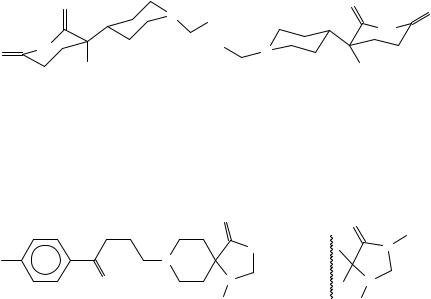
976 |
Mieczysław Ziełinski´ and Marianna Kanska´ |
|
|||
|
O |
N |
|
O |
O |
|
|
Ph |
|
||
|
|
|
|
||
|
|
|
|
NH |
|
|
|
|
|
|
|
O |
NH |
|
Ph |
N |
|
|
|
|
|
||
|
Ph |
|
|
|
Ph |
|
(229) |
|
|
(230) |
|
|
Dexetimide |
|
|
Levetimide |
|
24. Synthesis of 3-N-[11C]methylspiperone, 11CNMS (232) with high specific activity
232 has been produced automatically228 with high specific activity at EOB by reaction of [11C]CH3I with spiperone (equation 121), for measurement of dopamine D2 receptors in the human brain with a positron camera.
|
O |
O |
|
|
|
|
|
11CH3 |
|
NH |
N |
F |
N |
+ 11CH3 I |
O |
N |
(121) |
N |
||
|
Ph |
Ph |
|
|
(232) 85− 95% labelling yield |
|
|
from 11CH3 I |
The yield of 232 decreased228,229 to <50% at higher reaction temperatures and longer reaction time. The observed fast self-radiolysis of 11C-NMS has been suppressed remarkably by addition of hydroxyl radical scavengers230 such as potassium iodide (rate constant 1.0 ð 1010 M 1 s 1 at pH 7) and accelerated slightly by hydrated electron scavengers such as sodium nitrate (1.1 ð 1010 M 1 s 1 at pH 10 in aqueous solutions). The carrier methylspiperone (NMS) decomposed on 60Co irradiation gave the same compound with a molecular weight of 425 as the 11C-NMS gave upon self-radiolysis. The G-value of NMS decomposition by 60Co irradiation was about two in aqueous solution. Polysolvate80 (emulsifier, with three alcoholic OH groups in one molecule) and EtOH have been used228 as i.v. injectable additives to protect 11C-NMs against decomposition.
25. The synthesis of [3-11C]pyruvic acid (233)
233, a normal metabolite in the myocardium, applied in in vivo metabolic studies, has been obtained233 from racemic DL-[3-11C]alanine, 234, in turn obtained from N- (diphenylmethylene)glycine t-butyl ester, 235, as shown in equation 122, and subsequent enzymatic synthesis232,233 of 233 using D-amino acid oxydase (D-AAO)/catalase and glutamic-pyruvic transaminase (GPT) in a coupled, one-pot reaction presented in equations 123a and 123b.
26. Microwave method of radiolabelling with [11C]cyanide
The use of the microwave cavity in the typical syntheses involving NCA and carrier added [11C]cyanide234, such as cyano-de-halogenation with subsequent hydrolysis
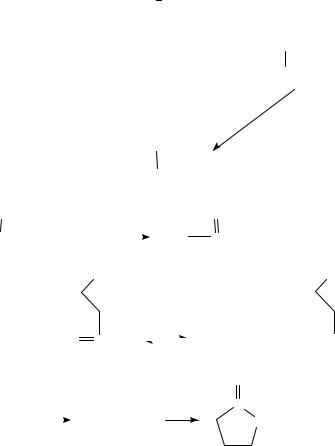
17. Syntheses and uses of isotopically labelled compounds |
977 |
of the nitrile (equation 124), or Bucher Strecker synthesis of aromatic amino acids235 (equation 125) instead of
11CH3
KOH, 11CH3 I
Ph2 C NCH2 COO-But-t
NCH2 COO-But-t  Ph2 C
Ph2 C NCHCOOBut-t
NCHCOOBut-t
DMF / DMSO, 80˚C, 2 min
(235) |
|
|
|
|
|
|
|
|
|
|
|
||
|
|
|
|
|
|
CH2 Cl2 |
, 150 ˚C, 5 min |
(122) |
|||||
|
|
|
|
|
|
|
|
|
|
|
|
|
|
|
|
|
|
|
|
|
|
|
|
|
|
6M HCl |
|
|
|
|
|
|
11CH3 |
|
|
|
|
|
|
||
|
|
|
|
|
+ |
|
|
|
|
|
|
|
|
|
|
|
|
H3 NCHCOOH |
|
|
|
|
|
||||
|
|
|
|
|
(234) |
|
|
|
|
|
|
|
|
NH2 |
|
|
|
|
|
O |
|
|
|
|
|
||
11CH3 CHCOOH |
D-A A O / catalase |
|
11CH3 |
CCOOH |
(123a) |
||||||||
|
|
|
|||||||||||
|
|
|
|||||||||||
D-alanine |
|
|
|
(233) pyruvic acid |
|
||||||||
|
|
|
|
COOH |
|
|
|
|
|
|
|
|
COOH |
|
NH2 |
|
|
|
|
|
|
|
O |
(123b) |
|||
11CH3 |
|
|
O CCOOH |
|
GPT |
11CH3 |
|
|
|
|
|
||
CHCOOH + |
|
|
|
|
CCOOH + |
H2 NCHCOOH |
|||||||
|
|
|
|
||||||||||
|
|
|
|||||||||||
L-alanine |
α-ketoglutarate |
|
|
|
(233) |
pyruvic acid |
|
||||||
|
|
|
|
|
|
|
|
|
O |
|
|||
|
|
|
|
|
|
|
|
|
11C |
(124) |
|||
HO(CH2 )3 X |
|
|
HO(CH2 )3 11CN |
|
|
|
|
O |
|||||
|
|
|
|
|
|
|
|||||||
X = Br, Cl
2 steps
p-HOC6H4CH2CH(OH)SO3Na ! p-HOC6H4CH2CH(NH2)11COOH 125
thermal treatment reduces the reaction time in the case of short-lived radionuclide, 11C, by about one half-life of the radionuclide and provides nearly 100% more radioactive product (at EOS). Thus less starting radioactivity is required to produce the given amount of radiotracer and the previously rejected radiolabelling routes because a small half-life of radioisotope may now be possible.
27. Synthesis and uses of [11C]thiocyanate
[11C]Thiocyanate has been obtained236 in 94% radiochemical yield under anhydrous conditions237 and used for preparation of ethyl- i-propyl- and benzyl[11C]thiocyanates in 78%, 71% and 88% radiochemical yields within 27 min, 28 min and 25 min synthesis time, respectively (equation 126). The organic [11C]thiocyanates will be converted to [11C]thiocarbamates236. They might be potentially useful also in the study of the tubular

978 |
|
Mieczysław Ziełinski´ and Marianna Kanska´ |
|
|
||||||||
transport of anions in the kidneys. |
|
|
|
|
|
|
|
|
||||
11CNBr |
|
Na2S |
K[2.2.2] |
S11CN |
|
|
RX, DMSO |
RS11CN |
126 |
|||
C |
! |
! |
||||||||||
|
|
|
DMSO, 80 |
°C, 1 min |
|
80 |
|
120 °C, 2 |
|
5 min |
|
|
|
|
|
|
|
|
|
|
|||||
separations
R D ethyl-, 2-propyl-, benzyl-
28. Synthesis of [1-11C]putrescine (236)
The radiosynthesis of 236 has been significantly improved238 by near-quantitative trapping of the [11C]HCN in anhydrous silica gel coated with potassium hydroxide, Michael addition reaction to acrylonitrile under anhydrous conditions on the same solid support medium and reduction of the [1-11C]succinonitrile obtained in anhydrous form with BMS (borane methyl sulphide complex) (equation 127). The absence of water during the addition reaction eliminated the formation of by-products and decreased the total synthesis time. The biochemical tumor masker239 241 236 has been obtained also previously242,243
but with lower radiochemical yields using BrCH2CH2CN/Na11CN/NaOH reagent242 or CH2DCHCN/Na11CN/NaOH243.
CH2 |
|
CHCN |
[11C]HCN |
N11CCH2 CH2 CN |
||
|
|
|
||||
KOH / silica gel |
||||||
|
||||||
|
|
|
|
|||
|
|
|
75 °C, 5 min |
|
||
|
|
2. A nhydr. HCl / MeOH, RT |
|
|||
|
|
3. 0.03M NaOH, HP LC |
(127) |
|||
|
|
|
|
|
1. BH3 :SMe2, dry THF, 140 °C, 10 min reflux |
|
11CH2 (NH2 )CH2 CH2 CH2 NH2
(236)[1-11C]-1, 4-diaminobutane.
29.Synthesis of [11C]octopamine (237a,b)
[11C]-p- and m-Octopamine, 237a,b, have been synthesized244 from [11C]HCN through the [11C]cyanohydrin intermediates 238 (equation 128). The radiochemical yield of 237 at the end of 40 60 min synthesis time was 0.7 2.3%; the (S)-enantiometric purity of the
[11C]octopamine obtained through the enzymatic process was 92%, the (R)-enantiomatic purity of [11C]-m-octopamine was 42%244,245. Studies with [3H]-p- and m-octopamine246
suggested its role in emotional and neurovegatative responses to stress247. The 11C- labelled compounds 237 in enantiomeric pure or enriched forms were needed to study the activities of the stereoisomers of p- and m-octopamine on ˛-adrenoceptors248.
30. One-line synthesis of [11C]cyanide from cyclotron-produced [11C]carbon dioxide
(a) H[11C]CN, 240, was recently produced249 in essentially quantitative yield by passing an [11C]CH4 ammonia mixture over a platinum catalyst in a furnace held at 1000 °C. The yield of 240 obtainable by this method highly depends on the proton energy and current impinging on the target and the compact cyclotrons providing 9.4 MeV proton
